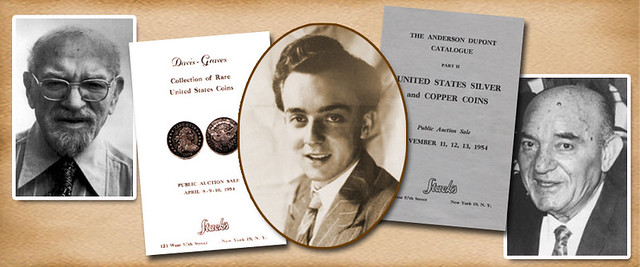
PREV ARTICLE
NEXT ARTICLE
FULL ISSUE
PREV FULL ISSUE
HARVEY STACK'S NUMISMATIC FAMILY, PART 53The latest article in Harvey Stack's blog series focuses on coin auctions of 1969, including the Gaston Dibello sale. -Editor  While the R.L. Miles Collection was a highlight, Stack's was able to present many other fine public auctions in 1969. In May Stack's offered the Illinois Collection, a comprehensive assemblage of ancient, foreign and United States gold coins, consisting of some 1,011 attractive numismatic lots. The month of June brought a fabulous collection of Greek and Roman gold, silver, and bronze coins, assembled by Fred V. Fowler over four decades and containing pieces from some major collections that had been offered earlier in the 20th century. The Fowler Collection contained over 1,200 lots of ancient coins, tracing early Greek and Roman monetary history. Among the highlights of the Greek offering was the decadrachm of Syracuse, decadrachm of Carthage 1st Revolt of Judea, and a 1 1/2 Gold stater of Carthage. In the Roman section, 420 lots, all the Emperors were represented, many in gold and others in silver. Together with the Greek portion, it provided an important opportunity for bidders to add to their Ancient world collections. In September we offered the extensive collection of Calvert Emmons, which had been started by his father in the late 19th century. It featured United States gold, silver and copper coins in wonderful condition and was quite complete in some areas. Calvert Emmons was an officer at the Bank of America, where he had served for some 30 years. He loved adding coins to his collection, and even went to several auctions. Among the other rarities in his collection were two examples of the very rare 1884 trade dollar. In October, Stack's was awarded the fabulous Gaston Dibello Collection of foreign coins for auction. This was another example of the firm being offered the opportunity to sell a collection we had been involved in building, as we had been serving Mr. Dibello since the end of World War II. Gaston was a prominent industrialist before and after the war, and was a longtime client of the Stack's. His first love was the coins of Italy where he was born. Early in life he moved to Buffalo, New York where he made his fortune. He expanded his collection after the war and ended up with an outstanding collection of gold coins. Gaston was a dedicated numismatist. He not only collected coins, but also helped form the Buffalo Numismatic Society and was president and treasurer of the club. In his local area he was guided by John J. Pittman in making some of his purchases. He exhibited portions of his collection all over the country, and won many first prize awards for his displays. He was among the few that traveled to Egypt when the famous King Farouk Collection was sold by the Egyptian government in 1954. He always said that he didn't feel totally safe making that trip, but he did it anyway, as it was an important opportunity to add rarities to his collection. His friend John J. Pittman was part of the small group of Americans who went. All were successful in getting some wonderful coins from the Farouk Collection. Since Gaston's collection was so large and had many rarities, Stack's suggested that it be sold in two parts, one in fall 1969 and the other in spring 1970. As Gaston Dibello had an affection for the coins of Italy, he assembled over 350 pieces from that country, from coins of the Renaissance up to the 1930s, as well as early Italian city and state issues. He had different denominations and types, mostly in very nice condition. It was one of the largest collections of the coins of Italy ever sold in the United States. The collection also contained a wonderful selection of coins from Great Britain, the rest of Europe, Africa and South America. Sold in two session, it was the most important comprehensive collection of gold coins of the world offered in the United States since World War II. The coins in the sale set one record after another due to their quality and rarity. Stack's concluded the year of 1969 with a comprehensive offering of several collections that included U.S., foreign and ancient gold, silver and copper coins. As a new decade approached, interest in rare coins continued to increase and Stack's was able to take advantage of the growing market through auctions and buying and selling, both over the counter and through the mail. To read the complete article, see:
To read the earlier E-Sylum article, see:

Wayne Homren, Editor The Numismatic Bibliomania Society is a non-profit organization promoting numismatic literature. See our web site at coinbooks.org. To submit items for publication in The E-Sylum, write to the Editor at this address: whomren@gmail.com To subscribe go to: https://my.binhost.com/lists/listinfo/esylum All Rights Reserved. NBS Home Page Contact the NBS webmaster 
|